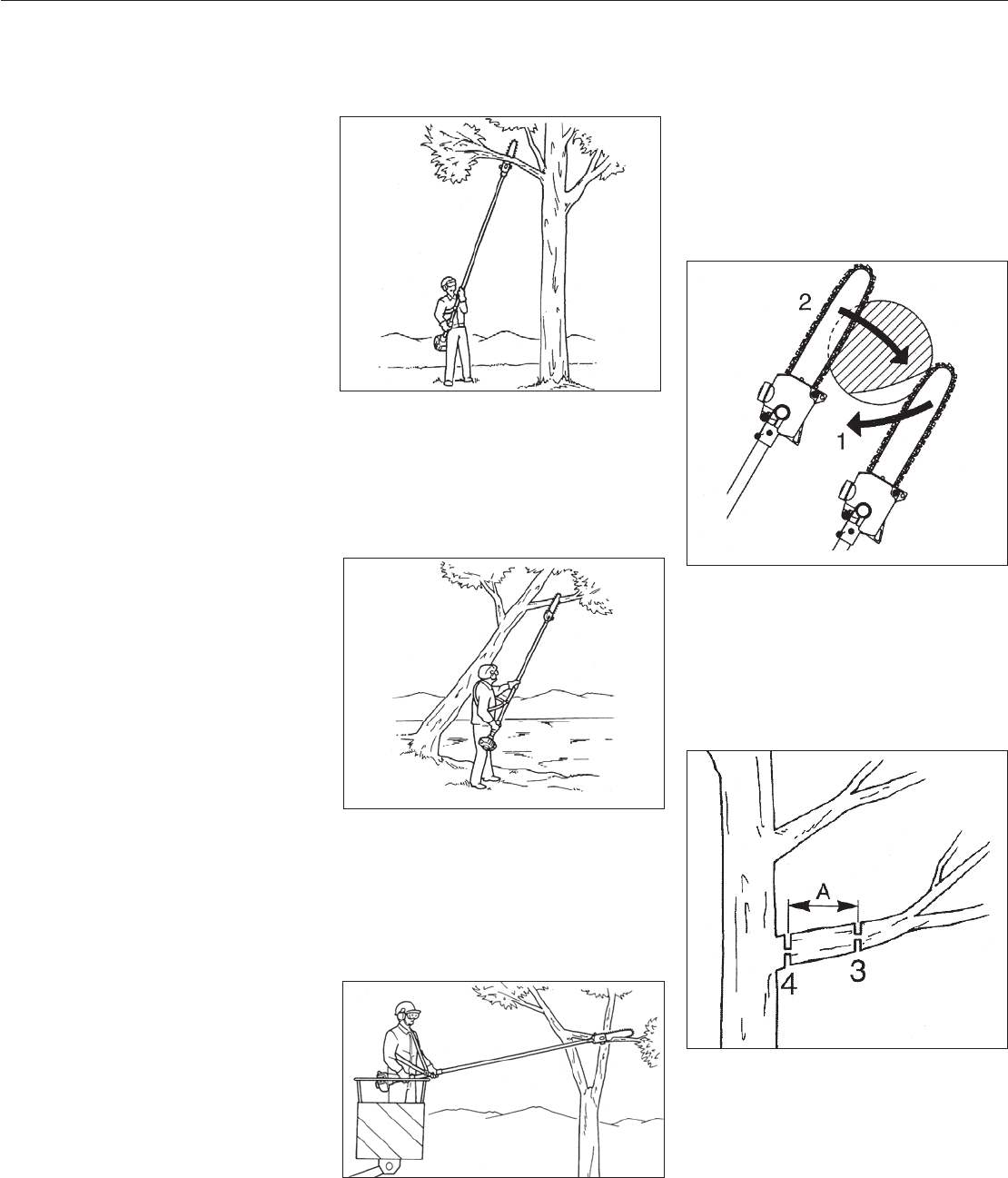
14
Relieving Cut:
To avoid tearing the bark, kickback or
pinching the bar when pruning thick
branches, always start by performing a
relieving cut (1) on the underside of the
branch.
To do this, apply the cutting attachment
and pull it across the bottom of the
branch as far as the bar nose. Perform the
cross-cut (2).
Flush-cutting Thick Branches:
If branch diameter is more than 10 cm,
first perform undercut (3) and cross-cut
at a distance (A) of about 25 cm from the
final cut. Then carry-out the flush-cut (4),
starting with a relieving cut and finishing
with a cross-cut.
Cutting Above Obstacles:
Thanks to the unit’s long reach it is
possible to prune branches that are
overhanging obstacles such as rivers or
lakes. The tool angle in this case depends
on the position of the branch.
Cutting On A Work Platform:
The unit’s long reach enables cutting to
be performed next to the trunk without
the risk of the work platform damaging
other branches. Tool angle in this case
depends on the position of the branch.
Using the Pole Pruner
This machine is designed especially for
cutting branches.
Never use this machine for any other
purpose. Never try to cut stones, metals,
plastics, or any other hard objects.
Using for purposes other than cutting
branches may damage the machine or
cause serious injury.
Preparations
Wear suitable protective clothing
and equipment – see section “Safety
Precautions”.
Choose the best work position for
safety against falling objects such as
branches.
Start the engine.
Put on the strap.
Never stand directly underneath the
branch you are cutting – be aware of
falling branches. Note that a branch may
spring back at you after it hits the ground.
Cutting Sequence:
To allow branches to fall freely, always cut
the bottom branches first. Prune heavy
branches (large in diameter) in several
controllable pieces.
Working Position:
Hold the control handle with your right
hand and the shaft with your left hand.
Your left arm should be extended to the
most comfortable position.
The shaft should always be held at an
angle of 60° or less.
■
■
■
■
Standard Cut:
The most convenient working position is
a tool angle of 60°, but any other angle
may be used to suit the situation.


















